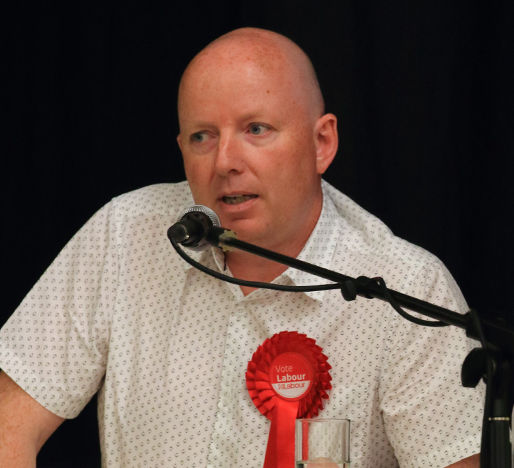The smoke and mirrors of the energy price cap
- Julian Vaughan

- Oct 28, 2021
- 5 min read
As someone who thinks they are reasonably savvy on consumer issues and does a fair bit of research before deciding on anything, I think I have just made a significant error in choosing my latest energy tariff*. However, before I get into the details of that error, having looked further into the issues around the ‘energy price cap’ I have realised that you soon enter a fog of information overload, with excel spreadsheets and tables which confuses rather than clarifies whether you are getting a good deal or not. There is also clear evidence that the cheapest deals are not being signposted to companies by the energy companies.
The energy cap, currently £1,277 for direct debit customers, is priced for a notional typical domestic use amount called the ‘Typical Domestic Consumption Value’. So it is not a cap as such, but the maximum amount you would be expected to pay for a set level of energy use. The current values are 12,000 kWh for gas and 2,900 kWh for electricity. If you use more energy than this amount you will pay more than the cap, if you use less energy you pay less.
What the energy cap doesn’t provide with any transparency, is the maximum rate that you can be charged for each unit of electricity that you use. You can find these amounts, but they are buried deep in footnotes. The example below is from a 2018 document, so is therefore out of date and I can’t find a more recent table in any Ofgem press release or web page.
The current cap (for October 2021 to April 2022) is 21 per KwH for electricity and 4p per kWh for gas. However, that info isn’t readily available. I found it buried in bullet point 5 in ‘notes to editors’ at the bottom of a 6th August Ofgem press release. This means it is very difficult to compare fixed-rate tariffs, to which the cap in unit price doesn’t apply, against the standard variable rates that are available from companies, where the cap in unit price does apply. Therefore, it is not readily apparent that at the moment a fixed tariff is very poor value for money.
As my tariff was coming up for renewal in November, I was sent an email by Octopus in late September giving me two fixed-rate options at 10.47 p/kWh or 7.79 p/kWh for gas, both obviously above the cap. Octopus did give a third option which was the standard variable rate at 3.83 p kWh, which is just below the energy cap of 4p per kWh. I’m not saying Octopus has done anything underhand and I believe they are one of the most forward-thinking companies in terms of what it offers to its customers. However, the email was couched in terms of prices rising rapidly (i.e. stating “the estimates below were accurate when this email was sent, but they may not be when you read this.”) so it potentially encourages a view of a ‘variable’ rate being seen as a highly risky option, especially in light of the media coverage around skyrocketing price rises. If I had been aware of the cap of 4p on default (more commonly known as ‘standard variable rate’) tariffs, I would not have been so concerned. Further, the way the move to a ‘standard variable rate,’ option 3, was put in negative terms i.e. ‘do nothing’ – was a further nudge away from taking that option as, in energy bill terms, doing nothing historically equals more expensive.

The three options provided in an email – the cheapest option is given last
In addition to the above, when you are on your Octopus account page and click on ‘change tariff’ it will offer you just the two fixed rates – and give no indication of what the standard variable rate is, which is currently much cheaper. This does not strike me as being transparent in offering the best deal for customers.

Clicking the ‘change my tariff’ button from your online account leads you to two options, both fixed-term plans considerably more expensive than the standard variable rate
There are two main issues here. Firstly, Ofgem who every six months decide what level to set the cap at, only provides a notional energy bill figure based on an assumed level of energy consumption. The cap on the maximum rate, per unit of energy, is not advertised transparently on its website, or in press releases. If you dig deeper and you do find the information it will be presented in a bewildering array of Excel spreadsheets and tables which will be unintelligible to the vast majority of customers. This means that you can’t compare fixed-rate deals against the standard variable rates. My view is that, while I can see the benefits of setting out the cap in its current form, the maximum unit rate allowed under the cap should be displayed and publicised just as prominently.
Secondly, it seems from the evidence above that energy companies are under no obligation to promote their cheapest tariffs – and make little effort to do so. While from a business perspective this makes perfect sense, it does not provide the best service to their customers and is ethically questionable.
If you look at how Ofgem describes their role and responsibilities they state: “We work to protect energy consumers, especially vulnerable people, by ensuring they are treated fairly and benefit from a cleaner, greener environment.” I would suggest that by not advertising the maximum price per unit in their cap, they are not providing the necessary level of transparency for customers to make informed choices. I believe that this information should be provided in the ‘default tariff cap letter’ which is sent out to all market participants and interested parties every six months setting out the level of the cap. Further, by not enforcing a requirement that energy companies prominently indicate their cheapest tariff, whether a fixed tariff or a standard variable rate tariff, they are not ensuring that customers are being treated fairly.
It is clear that whether by design or omission, the behaviour of Ofgem and energy companies has resulted in customers not being provided with clear information on the best deals. How many people in recent months have moved onto another fixed deal thinking that they were getting the cheapest tariff?
*So my significant error? Being ignorant of the price per kWh cap, I went on to the 12M fixed loyal rate at 7.79 p/Kwh rather than the far cheaper standard variable rate. However, my current tariff does not expire until 7th November so I will be asking to be put back on the variable rate. Even when the cap increases in April it is likely to be substantially lower than the current fixed rate deals offered.
Julian Vaughan 28th October 2021
Further reading:
Ofgem press release 6th August 2021: https://www.ofgem.gov.uk/publications/record-gas-prices-drive-price-cap-ps139-customers-encouraged-contact-supplier-support-and-switch-better-deal-if-possible
Energy price cap explained: https://www.forbes.com/uk/advisor/energy/energy-price-caps/
Default price cap overview document – November 2018: https://www.ofgem.gov.uk/sites/default/files/docs/2018/11/decision_-default_tariff_cap-_overview_document_0.pdf
Ofgem info about price caps: https://www.ofgem.gov.uk/information-consumers/energy-advice-households/check-if-energy-price-cap-affects-you






Comments